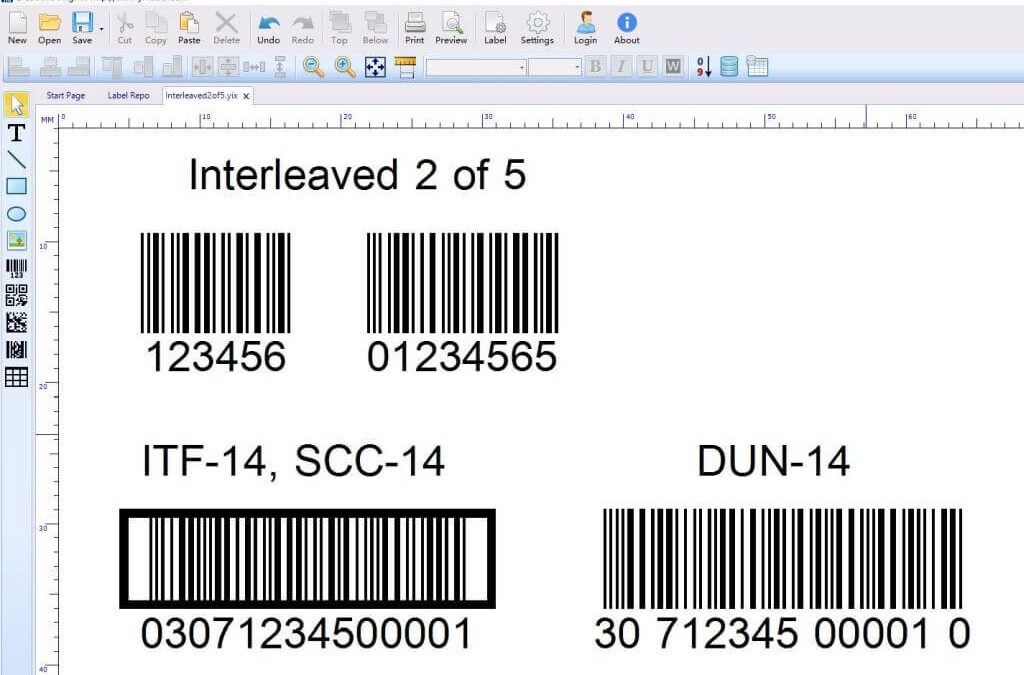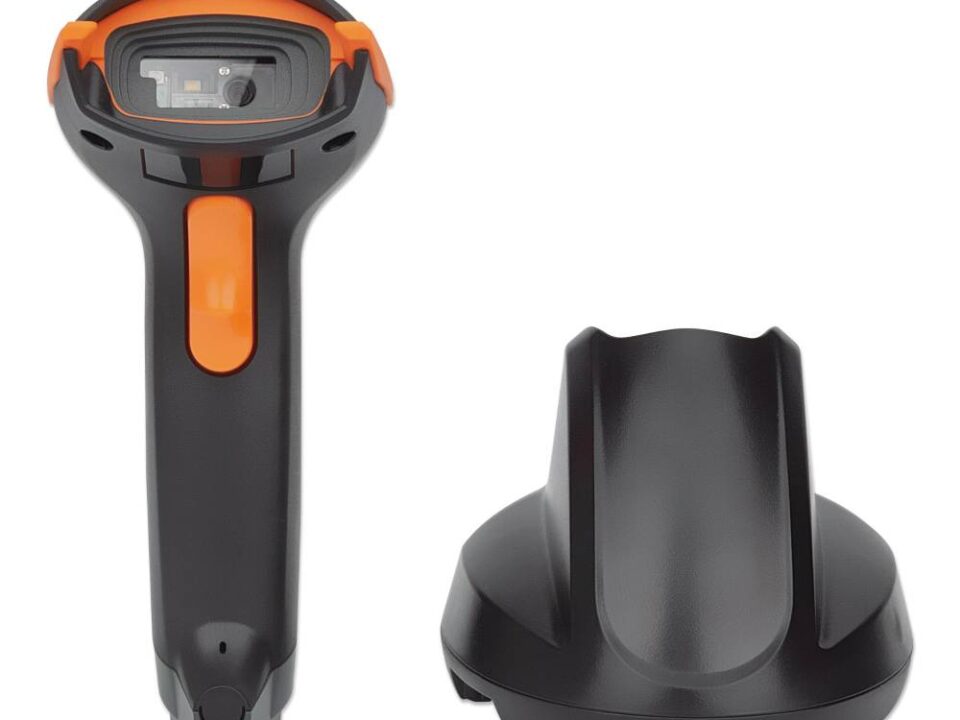Interleaved 2 of 5 (ITF) barcodes are two-width numeric codes that can encode information of any length, as long as there is an even number of digits in the code. Information is encoded based on the width of the bars and spaces, and exactly 2 out of every 5 bars are wide. Their predecessor, the Standard or Industrial 2 of 5 barcode, could encode information only in the width of the bars, but not the spaces. ITF barcodes are generally used for distribution and warehouse identification purposes. They are often used to identify cartons or crates which themselves contain items with their own UPC barcodes. Additionally, they are often used to label 135 film.
Specifications: The Interleaved 2 of 5 barcode begins with a start character, to indicate the beginning of the code. Then comes the encoded data, followed by an optional check digit, and the stop character. The ITF barcode can only encode an even number of digits, since each character is made up of two interleaving digits. If a code has an odd number of digits, a zero is added to the front of the barcode.
Advantages: The Interleaved 2 of 5 barcode can encode more information than the regular 2 of 5 code, as it utilizes the spaces as well as the bars themselves. Additionally, it is self-checking and does not require a check digit, though one can be added.
Disadvantages: It cannot encode letters, only numbers.
Interleaved 2 of 5 is a member of the Code 2 of 5 symbology family, which was first developed in 1968. It is sometimes referred to as ITF and forms the basis for the ITF-14 symbology that is widely used for shipping and transport logistics.
Interleaved 2 of 5 is often used instead of Code 39 – Regular because barcode messages that contain only numbers can be encoded in Interleaved 2 of 5 by using about half the space required by Code 39.
Interleaved 2 of 5 is defined in ISO/IEC 16390 Information technology – Automatic identification and data capture techniques – Interleaved 2 of 5 bar code symbology specification. For information about the GS1 implementation of ITF-14, see the GS1 General Specifications document.
Interleaved 2 of 5 Symbol Structure
The symbol comprises the following elements:
- Leading quiet zone
- Start pattern (narrow bar, narrow space, narrow bar, narrow space)
- One or more pairs of symbol characters that represent data (including an optional check digit)
- Stop pattern (wide bar, narrow space, narrow bar)
- Trailing quiet zone
Each Interleaved 2 of 5 character is represented by five elements: five bars or five spaces, two of which are wide and three narrow. The name “Interleaved 2 of 5” comes from the interleaving of the patterns of bars and spaces that represent the individual characters within the symbol: Characters are represented in pairs, and in every 10 elements, the five bars represent one character and the five spaces between them represent the next character.
All Interleaved 2 of 5 barcode messages must contain an even number of digits. Therefore, a leading zero will be added to the front of the barcode message in either of the following situations:
- The character message that is to be encoded contains an odd number of digits and the check digit is not in use
- The character message that is to be encoded contains an even number of digits and the check digit is in use
Interleaved 2 of 5 contains no intercharacter spaces.
Common variants and structures: ITF-14, container number barcode (DUN-14)




